HSBC 2007 Annual Report Download - page 285
Download and view the complete annual report
Please find page 285 of the 2007 HSBC annual report below. You can navigate through the pages in the report by either clicking on the pages listed below, or by using the keyword search tool below to find specific information within the annual report.-
 1
1 -
 2
2 -
 3
3 -
 4
4 -
 5
5 -
 6
6 -
 7
7 -
 8
8 -
 9
9 -
 10
10 -
 11
11 -
 12
12 -
 13
13 -
 14
14 -
 15
15 -
 16
16 -
 17
17 -
 18
18 -
 19
19 -
 20
20 -
 21
21 -
 22
22 -
 23
23 -
 24
24 -
 25
25 -
 26
26 -
 27
27 -
 28
28 -
 29
29 -
 30
30 -
 31
31 -
 32
32 -
 33
33 -
 34
34 -
 35
35 -
 36
36 -
 37
37 -
 38
38 -
 39
39 -
 40
40 -
 41
41 -
 42
42 -
 43
43 -
 44
44 -
 45
45 -
 46
46 -
 47
47 -
 48
48 -
 49
49 -
 50
50 -
 51
51 -
 52
52 -
 53
53 -
 54
54 -
 55
55 -
 56
56 -
 57
57 -
 58
58 -
 59
59 -
 60
60 -
 61
61 -
 62
62 -
 63
63 -
 64
64 -
 65
65 -
 66
66 -
 67
67 -
 68
68 -
 69
69 -
 70
70 -
 71
71 -
 72
72 -
 73
73 -
 74
74 -
 75
75 -
 76
76 -
 77
77 -
 78
78 -
 79
79 -
 80
80 -
 81
81 -
 82
82 -
 83
83 -
 84
84 -
 85
85 -
 86
86 -
 87
87 -
 88
88 -
 89
89 -
 90
90 -
 91
91 -
 92
92 -
 93
93 -
 94
94 -
 95
95 -
 96
96 -
 97
97 -
 98
98 -
 99
99 -
 100
100 -
 101
101 -
 102
102 -
 103
103 -
 104
104 -
 105
105 -
 106
106 -
 107
107 -
 108
108 -
 109
109 -
 110
110 -
 111
111 -
 112
112 -
 113
113 -
 114
114 -
 115
115 -
 116
116 -
 117
117 -
 118
118 -
 119
119 -
 120
120 -
 121
121 -
 122
122 -
 123
123 -
 124
124 -
 125
125 -
 126
126 -
 127
127 -
 128
128 -
 129
129 -
 130
130 -
 131
131 -
 132
132 -
 133
133 -
 134
134 -
 135
135 -
 136
136 -
 137
137 -
 138
138 -
 139
139 -
 140
140 -
 141
141 -
 142
142 -
 143
143 -
 144
144 -
 145
145 -
 146
146 -
 147
147 -
 148
148 -
 149
149 -
 150
150 -
 151
151 -
 152
152 -
 153
153 -
 154
154 -
 155
155 -
 156
156 -
 157
157 -
 158
158 -
 159
159 -
 160
160 -
 161
161 -
 162
162 -
 163
163 -
 164
164 -
 165
165 -
 166
166 -
 167
167 -
 168
168 -
 169
169 -
 170
170 -
 171
171 -
 172
172 -
 173
173 -
 174
174 -
 175
175 -
 176
176 -
 177
177 -
 178
178 -
 179
179 -
 180
180 -
 181
181 -
 182
182 -
 183
183 -
 184
184 -
 185
185 -
 186
186 -
 187
187 -
 188
188 -
 189
189 -
 190
190 -
 191
191 -
 192
192 -
 193
193 -
 194
194 -
 195
195 -
 196
196 -
 197
197 -
 198
198 -
 199
199 -
 200
200 -
 201
201 -
 202
202 -
 203
203 -
 204
204 -
 205
205 -
 206
206 -
 207
207 -
 208
208 -
 209
209 -
 210
210 -
 211
211 -
 212
212 -
 213
213 -
 214
214 -
 215
215 -
 216
216 -
 217
217 -
 218
218 -
 219
219 -
 220
220 -
 221
221 -
 222
222 -
 223
223 -
 224
224 -
 225
225 -
 226
226 -
 227
227 -
 228
228 -
 229
229 -
 230
230 -
 231
231 -
 232
232 -
 233
233 -
 234
234 -
 235
235 -
 236
236 -
 237
237 -
 238
238 -
 239
239 -
 240
240 -
 241
241 -
 242
242 -
 243
243 -
 244
244 -
 245
245 -
 246
246 -
 247
247 -
 248
248 -
 249
249 -
 250
250 -
 251
251 -
 252
252 -
 253
253 -
 254
254 -
 255
255 -
 256
256 -
 257
257 -
 258
258 -
 259
259 -
 260
260 -
 261
261 -
 262
262 -
 263
263 -
 264
264 -
 265
265 -
 266
266 -
 267
267 -
 268
268 -
 269
269 -
 270
270 -
 271
271 -
 272
272 -
 273
273 -
 274
274 -
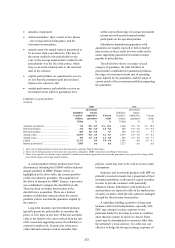 275
275 -
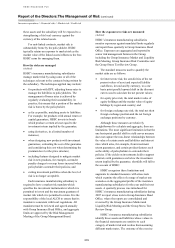 276
276 -
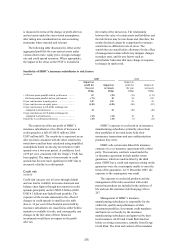 277
277 -
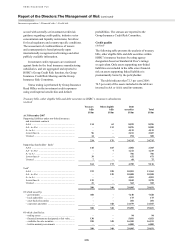 278
278 -
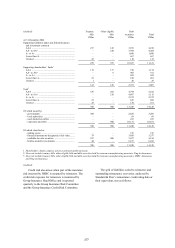 279
279 -
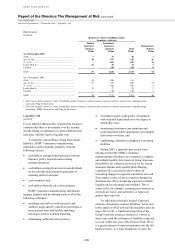 280
280 -
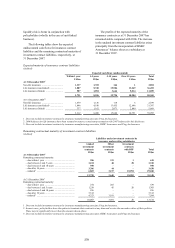 281
281 -
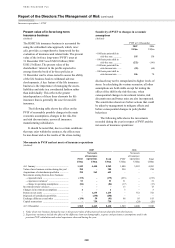 282
282 -
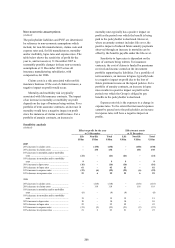 283
283 -
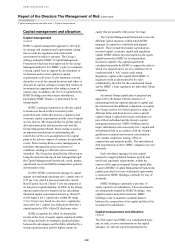 284
284 -
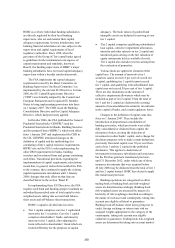 285
285 -
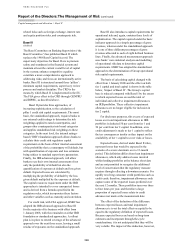 286
286 -
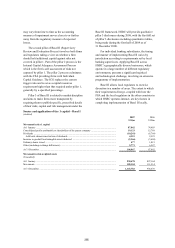 287
287 -
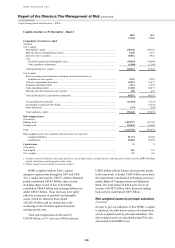 288
288 -
 289
289 -
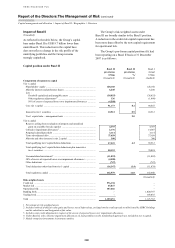 290
290 -
 291
291 -
 292
292 -
 293
293 -
 294
294 -
 295
295 -
 296
296 -
 297
297 -
 298
298 -
 299
299 -
 300
300 -
 301
301 -
 302
302 -
 303
303 -
 304
304 -
 305
305 -
 306
306 -
 307
307 -
 308
308 -
 309
309 -
 310
310 -
 311
311 -
 312
312 -
 313
313 -
 314
314 -
 315
315 -
 316
316 -
 317
317 -
 318
318 -
 319
319 -
 320
320 -
 321
321 -
 322
322 -
 323
323 -
 324
324 -
 325
325 -
 326
326 -
 327
327 -
 328
328 -
 329
329 -
 330
330 -
 331
331 -
 332
332 -
 333
333 -
 334
334 -
 335
335 -
 336
336 -
 337
337 -
 338
338 -
 339
339 -
 340
340 -
 341
341 -
 342
342 -
 343
343 -
 344
344 -
 345
345 -
 346
346 -
 347
347 -
 348
348 -
 349
349 -
 350
350 -
 351
351 -
 352
352 -
 353
353 -
 354
354 -
 355
355 -
 356
356 -
 357
357 -
 358
358 -
 359
359 -
 360
360 -
 361
361 -
 362
362 -
 363
363 -
 364
364 -
 365
365 -
 366
366 -
 367
367 -
 368
368 -
 369
369 -
 370
370 -
 371
371 -
 372
372 -
 373
373 -
 374
374 -
 375
375 -
 376
376 -
 377
377 -
 378
378 -
 379
379 -
 380
380 -
 381
381 -
 382
382 -
 383
383 -
 384
384 -
 385
385 -
 386
386 -
 387
387 -
 388
388 -
 389
389 -
 390
390 -
 391
391 -
 392
392 -
 393
393 -
 394
394 -
 395
395 -
 396
396 -
 397
397 -
 398
398 -
 399
399 -
 400
400 -
 401
401 -
 402
402 -
 403
403 -
 404
404 -
 405
405 -
 406
406 -
 407
407 -
 408
408 -
 409
409 -
 410
410 -
 411
411 -
 412
412 -
 413
413 -
 414
414 -
 415
415 -
 416
416 -
 417
417 -
 418
418 -
 419
419 -
 420
420 -
 421
421 -
 422
422 -
 423
423 -
 424
424 -
 425
425 -
 426
426 -
 427
427 -
 428
428 -
 429
429 -
 430
430 -
 431
431 -
 432
432 -
 433
433 -
 434
434 -
 435
435 -
 436
436 -
 437
437 -
 438
438 -
 439
439 -
 440
440 -
 441
441 -
 442
442 -
 443
443 -
 444
444 -
 445
445 -
 446
446 -
 447
447 -
 448
448 -
 449
449 -
 450
450 -
 451
451 -
 452
452 -
 453
453 -
 454
454 -
 455
455 -
 456
456 -
 457
457 -
 458
458 -
 459
459 -
 460
460 -
 461
461 -
 462
462 -
 463
463 -
 464
464 -
 465
465 -
 466
466 -
 467
467 -
 468
468 -
 469
469 -
 470
470 -
 471
471 -
 472
472 -
 473
473 -
 474
474 -
 475
475 -
 476
476
 |
 |
283
HSBC as a whole. Individual banking subsidiaries
are directly regulated by their local banking
supervisors, who set and monitor their capital
adequacy requirements. In most jurisdictions, non-
banking financial subsidiaries are also subject to the
supervision and capital requirements of local
regulatory authorities. Since 1988, when the
governors of the Group of Ten central banks agreed
to guidelines for the international convergence of
capital measurement and standards, known as
Basel I, the banking supervisors of HSBC’s major
banking subsidiaries have exercised capital adequacy
supervision within a broadly similar framework.
The FSA implements the capital adequacy
requirements issued by the Basel Committee on
Banking Supervision (‘the Basel Committee’) as
implemented by the relevant EU Directives. In June
2006, the EU Capital Requirements Directive
(‘CRD’) was formally adopted by the Council and
European Parliament and it required EU Member
States to bring implementing provisions into force
on 1 January 2007. The CRD recast the Banking
Consolidation Directive and the Capital Adequacy
Directive, which had previously applied.
In October 2006, the FSA published the General
Prudential Sourcebook (‘GENPRU’) and the
Prudential Sourcebook for Banks, Building Societies
and Investment Firms (‘BIPRU’), which took effect
from 1 January 2007 and implemented the CRD in
the UK. GENPRU introduced changes to the
definition of capital and the methodology for
calculating a firm’s capital resources requirements.
BIPRU sets out the FSA’s rules implementing the
other CRD requirements for banks, building
societies and investment firms and groups containing
such firms. Transitional provisions regarding the
implementation of capital requirements calculations
meant that, in general, unless firms notified the FSA
to the contrary, they continued to apply the existing
capital requirements calculations until 1 January
2008; changes that took effect on that date are
described below in the section ‘Basel II’.
In implementing these EU Directives, the FSA
requires each bank and banking group to maintain an
individually prescribed ratio of total capital to risk-
weighted assets, taking into account both balance
sheet assets and off-balance sheet transactions.
HSBC’s capital is divided into two tiers:
• Tier 1 capital comprises core tier 1 capital and
innovative tier 1 securities. Core tier 1 capital
comprises shareholders’ funds, and minority
interests in tier 1 capital, after adjusting for
items reflected in shareholders’ funds which are
treated differently for the purposes of capital
adequacy. The book values of goodwill and
intangible assets are deducted in arriving at core
tier 1 capital.
• Tier 2 capital comprises qualifying subordinated
loan capital, collective impairment allowances,
minority and other interests in tier 2 capital and
unrealised gains arising on the fair valuation of
equity instruments held as available-for-sale.
Tier 2 capital also includes reserves arising from
the revaluation of properties.
Various limits are applied to elements of the
capital base. The amount of innovative tier 1
securities cannot exceed 15 per cent of overall tier
1 capital, qualifying tier 2 capital cannot exceed
tier 1 capital, and qualifying term subordinated loan
capital may not exceed 50 per cent of tier 1 capital.
There are also limitations on the amount of
collective impairment allowances which may be
included as part of tier 2 capital. From the total of
tier 1 and tier 2 capital are deducted the carrying
amounts of unconsolidated investments, investments
in the capital of banks, and certain regulatory items.
Changes to the definition of capital came into
force on 1 January 2007. They include the
introduction of proportional consolidation of
banking associates, which previously were either
fully consolidated or deducted from capital, the
relaxation of rules covering the deduction of
investments in other banks’ capital, and a change for
disclosure purposes only to make certain deductions,
previously from total capital, now 50 per cent from
each of tier 1 and tier 2 capital in the published
disclosures. This applies to deductions of
investments in insurance subsidiaries and associates,
but the FSA has granted a transitional provision,
until 31 December 2012, under which any of these
insurance investments that were acquired before
20 July 2006 may be deducted from the total of tier 1
and tier 2 capital instead. HSBC has elected to apply
this transitional provision.
Banking operations are categorised as either
trading book or banking book and risk-weighted
assets are determined accordingly. Banking book
risk-weighted assets are measured by means of a
hierarchy of risk weightings classified according to
the nature of each asset and counterparty, taking into
account any eligible collateral or guarantees.
Banking book off-balance sheet items giving rise to
credit, foreign exchange or interest rate risk are
assigned weights appropriate to the category of the
counterparty, taking into account any eligible
collateral or guarantees. Trading book risk-weighted
assets are determined by taking into account market-
